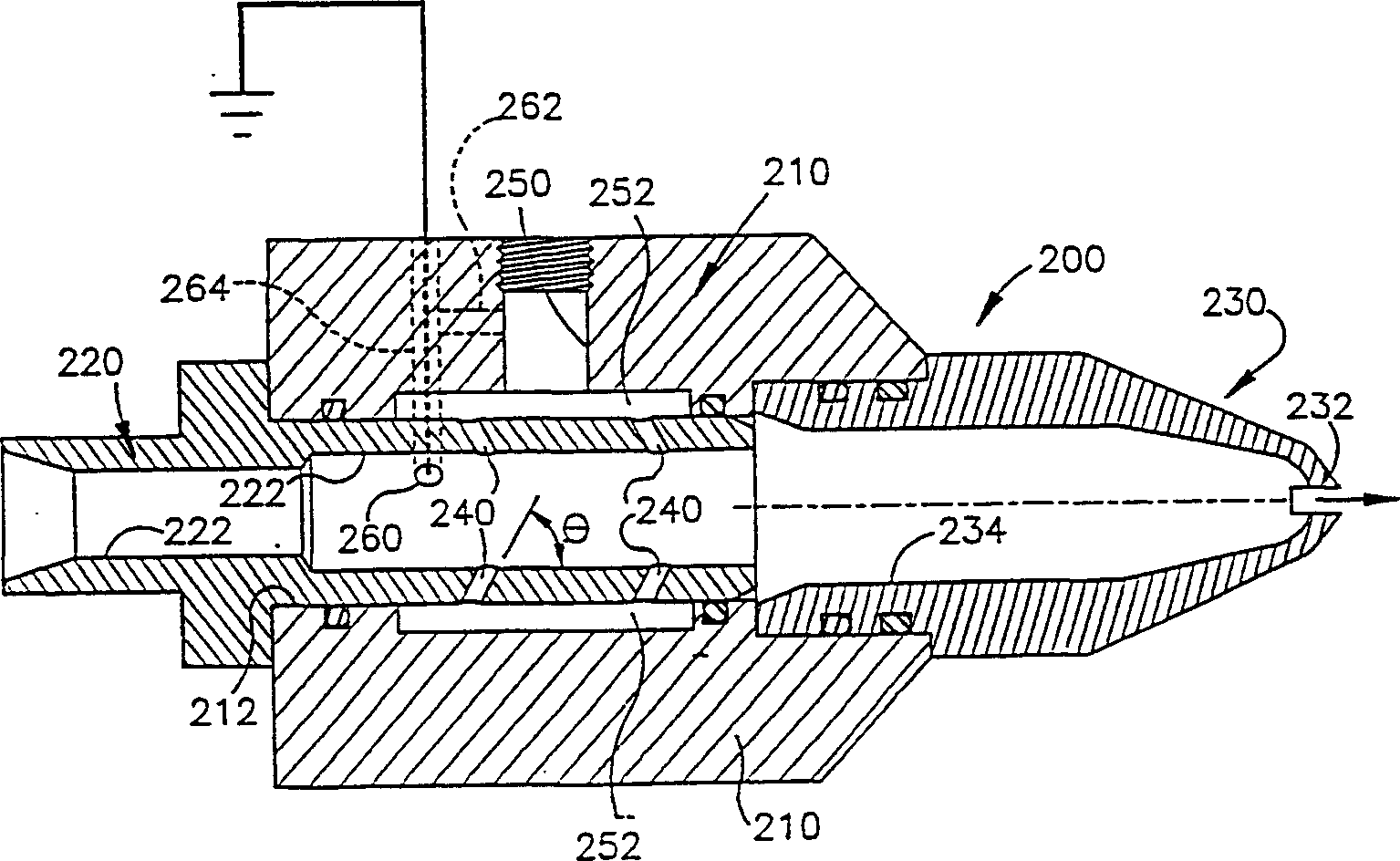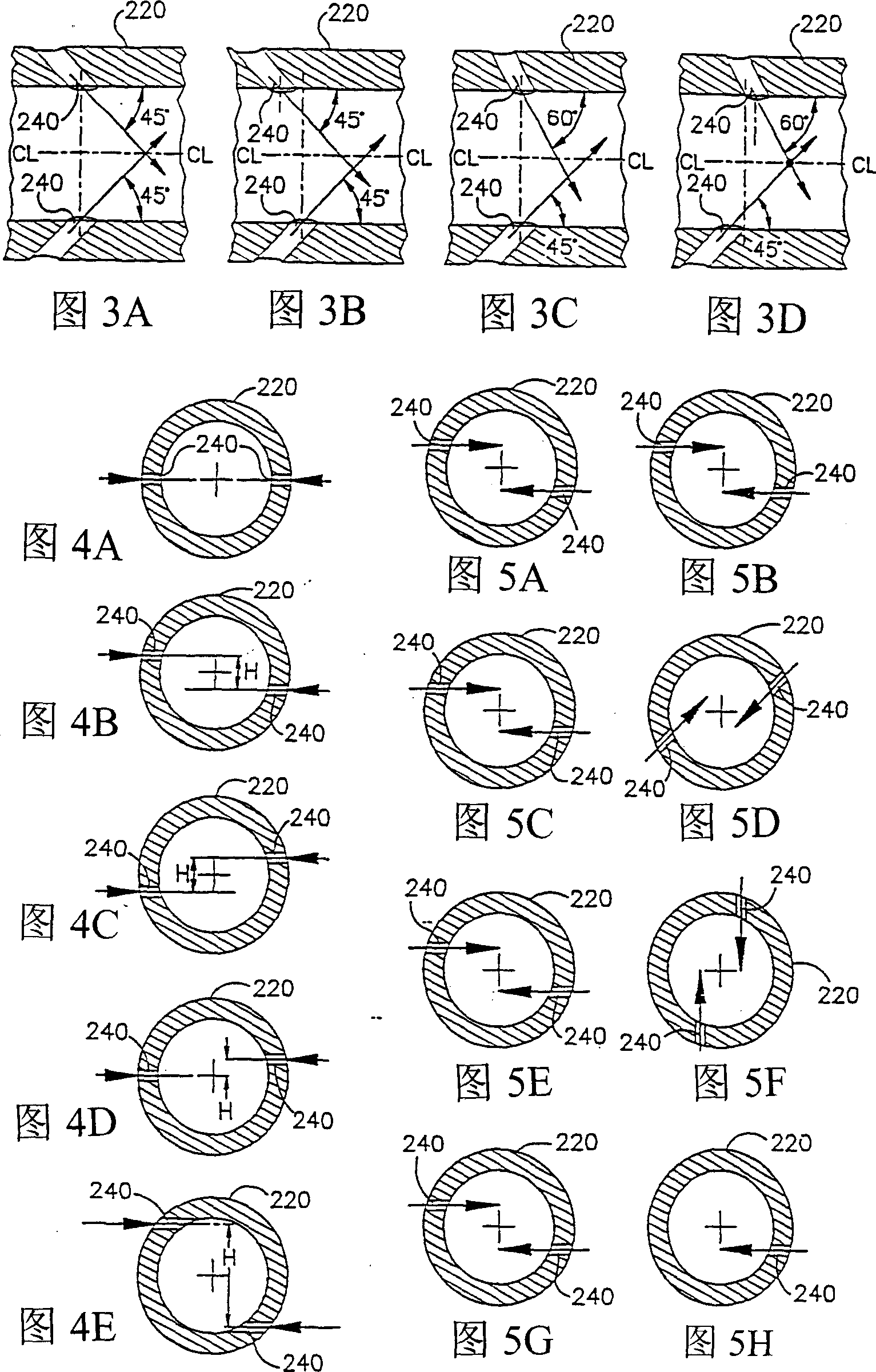Unipolarity powder coating systems including improved tribocharging and corona guns
A technology of friction electrification and electrification polarity, which is applied in the direction of friction discharge spraying, electrostatic spraying device, spraying device, etc., and can solve problems such as internal corner spraying of parts that cannot be sprayed, damage to powder conveying parts, etc.
- Summary
- Abstract
- Description
- Claims
- Application Information
AI Technical Summary
Problems solved by technology
Method used
Image
Examples
example 1
[0052] A mixture of 20% polytetrafluoroethylene and 80% nylon 6 / 6, a polyamide / halogenated hydrocarbon resin mixture, was prepared as a disc. For comparison, conventional materials such as nylon and Teflon (Teflon) samples were also prepared at the same time.
[0053] Relative conversion efficiencies were determined for powder coatings applied by a fan-shaped fog cone spray nozzle with an opening of 0.450 inches by 0.065 inches, which sprayed the paint on the pan at a 45-degree angle at an air flow rate of 4 cubic feet per minute superior. Powder impinging on the surface of the disc of tribo-charged material is deflected from the disc onto a grounded metal target. The raw charge measured for the powder present in the nozzle was zero. Therefore, all these powders are charged by impacting the friction material. The ratio of the powder sticking to the metal target to the total powder is defined as the relative conversion efficiency. Typically 50 grams of epoxy polyester powde...
example 2
[0056] Prepare several plates of 5% PTFE and 95% nylon 6 / 6, polyamide mixture, and conduct conversion efficiency experiments as in Example 1. The results are shown in Table I.
[0057] The advantage of using polyamide mixtures in powder spray guns is that the charging of the powder is increased due to the increased discharge on the surface of the triboelectric gun. The increase in surface discharge is due to the incompatibility of the polymers, which creates leakage paths that would not occur in homogeneous polymers. Another advantage of using these polyamide blends is that the hygroscopicity of the nylon is reduced when the nylon is filled with PTFE or polyethylene.
[0058] 2. Polyamide resin reinforced fiber
[0059] Polyamide resin reinforcement fibers include polyamide polymers filled with polyamide fibers. The weight percentage of the polyamide polymer is preferably about 50% to 99%, more preferably about 85% to 95%. Wherein the weight percentage of the polyamide fib...
example 3
[0064] Several disks of polyamide resin reinforced fibers were prepared. For comparison, conventional fiber-free nylon and Teflon samples were also prepared at the same time. The conversion efficiency experiment was carried out as in Example 1. The results are shown in Table I.
[0065] example
Material
Plate thickness (inch)
polarity
Relative Conversion Efficiency%
Compared
Nylon 6,6
0.155
-
16.5
1
Nylon 6, 5% in 6
PTFE
0.250
-
21.3
2
Nylon 6, 20% in 6
PTFE
0.250
-
24.7
3
Nylon 6, 10% in 6
0.123
-
39.2
Compared
-
+
54.3
4
Fill R MoS 2 Nylon
0.118
-
22.4
[0066] Surprisingly, the nylon added to the fiber negatively charged the powder except for the KEVLAR(R) fiber in the comparative example, which charged the powder ...
PUM
| Property | Measurement | Unit |
|---|---|---|
| length | aaaaa | aaaaa |
| conversion efficiency | aaaaa | aaaaa |
Abstract
Description
Claims
Application Information
 Login to View More
Login to View More - R&D
- Intellectual Property
- Life Sciences
- Materials
- Tech Scout
- Unparalleled Data Quality
- Higher Quality Content
- 60% Fewer Hallucinations
Browse by: Latest US Patents, China's latest patents, Technical Efficacy Thesaurus, Application Domain, Technology Topic, Popular Technical Reports.
© 2025 PatSnap. All rights reserved.Legal|Privacy policy|Modern Slavery Act Transparency Statement|Sitemap|About US| Contact US: help@patsnap.com



